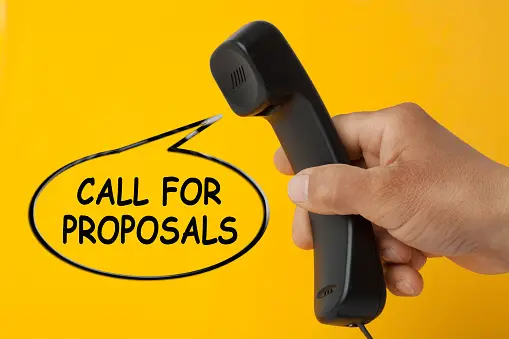A project communication plan for a grant proposal outlines how you will share information about your grant project with stakeholders. This plan should be clear and concise so that everyone involved understands what to expect.
How to write a clear and concise project communication plan for a grant proposal?
Here are some tips for writing a strong project communication plan:
- Identify the stakeholders: Before you start writing the plan, identify all the stakeholders who will be involved in the project. This could include the grant funding organization, project team members, community partners, and the people who will benefit from the project.
- Define the goals: Clearly state the goals of your project communication plan. What do you hope to achieve by sharing information with stakeholders? For example, you might want to keep stakeholders informed of project progress, or you might want to encourage community engagement.
- Choose the right communication tools: There are many different tools you can use to communicate with stakeholders, including emails, newsletters, social media, and face-to-face meetings. Choose the tools that are most appropriate for your audience and the type of information you want to share.
- Establish a schedule: Decide how often you will communicate with stakeholders and what type of information you will share. For example, you might send a monthly update on project progress, or hold a quarterly meeting to discuss project goals.
- Use stories: To make your project communication plan more engaging and memorable, use stories to illustrate the impact of your project. Share real-life examples of how the project is making a difference for people, and include quotes from project participants.
- Involve stakeholders: Encourage stakeholders to be actively involved in the project by asking for their feedback and opinions. This will help build trust and ensure that everyone feels invested in the project’s success.
Here’s a practical example:
Imagine you are writing a project communication plan for a grant-funded community garden project. Your goal is to keep stakeholders informed of project progress and encourage community engagement.
- Identify the stakeholders: Your stakeholders include the grant funding organization, project team members, community partners, and local residents who will benefit from the project.
- Define the goals: The goals of your project communication plan are to keep stakeholders informed of project progress and encourage community engagement.
- Choose the right communication tools: You will use a combination of email newsletters, social media, and face-to-face meetings to communicate with stakeholders.
- Establish a schedule: You will send a monthly email update on project progress, and hold a quarterly meeting to discuss project goals and gather feedback from stakeholders.
- Use stories: In your monthly email updates, you will share stories of how the community garden is making a difference for local residents. For example, you might tell the story of an elderly resident who is now able to grow fresh vegetables in the garden, improving their health and quality of life.
- Involve stakeholders: You will encourage stakeholders to be actively involved in the project by inviting them to participate in quarterly meetings and asking for their feedback on project goals and progress. By involving stakeholders in the project, you will build trust and ensure that everyone feels invested in its success.
Example 1: A community garden project
Goals:
- To create a community garden that provides fresh produce for low-income families
- To educate community members about sustainable agriculture practices
- To bring the community together through a shared love of gardening
Target Audience: Low-income families, community members interested in sustainable agriculture
Communication Plan:
- Host community meetings to gather input and feedback on the garden’s design and implementation. Share success stories of other community gardens and their impact on local communities.
- Create a blog to document the garden’s progress and share educational content on sustainable agriculture practices. Use photos and videos to bring the garden to life and show the community how it’s growing.
- Partner with local schools to offer hands-on gardening workshops for students. Invite families to join and make it a fun, interactive experience.
- Hold a grand opening event for the garden to celebrate its completion and bring the community together. Serve fresh produce from the garden and have interactive exhibits and demonstrations on sustainable agriculture.
Example 2: A mentorship program for underprivileged youth
Goals:
- To provide guidance and support to underprivileged youth
- To help young people develop job skills and confidence
- To connect them with positive role models
Target Audience: Underprivileged youth, local businesses, community leaders
Communication Plan:
- Host a launch event to introduce the program and share its goals with the community. Invite successful local business owners and community leaders to speak and share their stories of overcoming challenges to achieve success.
- Create a website and social media presence for the program to share updates, success stories, and job opportunities.
- Partner with local businesses to offer job shadowing experiences for young people in the program. Share photos and videos of these experiences on the program’s website and social media to showcase the impact of the program.
- Host a graduation ceremony for program participants to recognize their achievements and provide a platform for them to share their experiences and aspirations with the community.
By using storytelling in your project communication plan, you can help your target audience understand the impact of your project and connect with its goals on a personal level. This helps build support and buy-in for the project, making it more likely to succeed.
Practical examples of creating a clear and concise project communication plan for a grant proposal.
Example 1: A local community center in a low-income neighborhood wants to apply for a grant to provide after-school programs for children. In their project communication plan, they could describe how they plan to keep both the children’s families and the wider community informed about the progress of the program. They might tell a story of a mother who was hesitant to enroll her child in the after-school program at first, but was won over after receiving regular updates about her child’s involvement and the positive impact it was having. This could illustrate the importance of regular communication for building trust and ensuring buy-in from all stakeholders.
Example 2: An environmental organization wants to apply for a grant to restore a damaged ecosystem in a local park. In their project communication plan, they could detail how they plan to engage the local community in the restoration process, including regular updates and opportunities for volunteers to get involved. They might tell a story of a young boy who was inspired to take action on environmental issues after participating in a tree-planting event in the park and seeing the direct impact of his efforts. This could demonstrate the importance of involving the community in the process and showing the tangible outcomes of their work.
Example 3: A youth-led organization wants to apply for a grant to create a leadership program for high school students. In their project communication plan, they could outline how they plan to communicate with the participating students and keep them informed about program activities and expectations. They might tell a story of a student who was initially intimidated by the program, but was encouraged by regular check-ins from the program leaders and the support of her peers. This could highlight the importance of open and regular communication for creating a positive learning environment and ensuring the success of the program.




